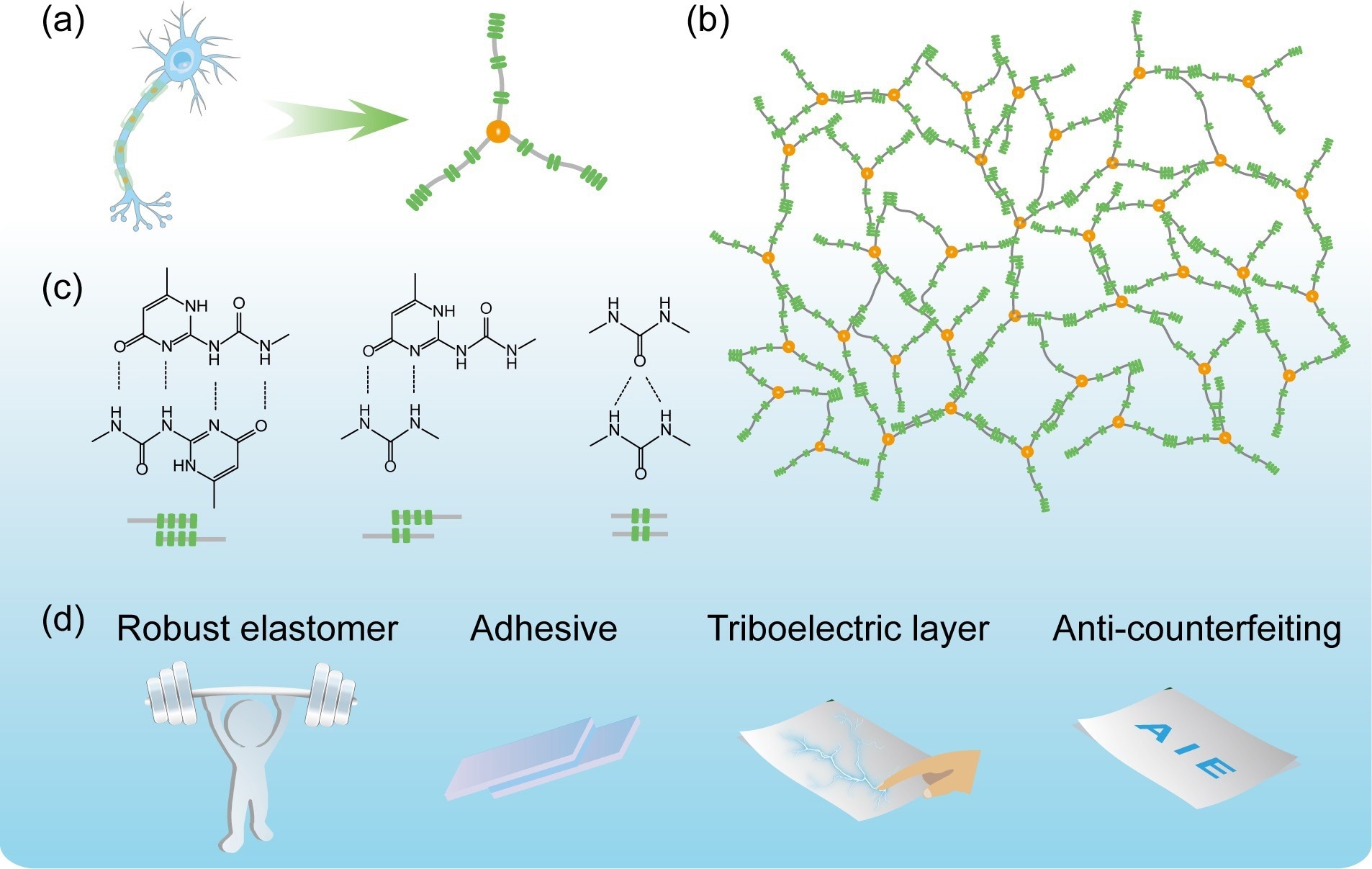At the Ningbo Institute of Materials Technology and Engineering (NIMTE) of the Chinese Academy of Sciences, scientists have suggested a neuron-inspired all-around telechelic polymer exhibiting unusual physical and mechanical properties, triboelectricity, quick self-healing ability, adhesion, as well as aggregate-induced emission (AIE) fluorescence.

Chain architecture and applications of the telechelic polymer. Image Credit: Ningbo Institute of Materials Technology and Engineering.
The study outcomes were reported in the journal Advanced Functional Materials.
High-performance polymers tend to display enormous application outlooks in the high-tech fields of energy storage, marine anti-corrosive coating, intelligent displays, and flexible sensors.
So far, however, it has always been hard to come up with polymers combined with excellent mechanical properties (like toughness, stiffness, and crack tolerance), triboelectricity, quick self-healing ability, and also optical or electrical properties.
Having gained inspiration from the neuron’s axon structure, scientists at NIMTE have synthesized a telechelic polymer along with a three-arm structure. The 2-ureido-4 pyrimidinone (UPy) ends every arm, and its length is well-regulated inside a small range to decrease the entanglement density.
This helps enhance the self-healing efficiency of the telechelic polymer. At the same time, broad urea groups are fixed into each arm to build a hierarchical hydrogen bond (H-bonds) network.
By virtue of fixing the arm’s length, it is possible to tune the mechanical performance of the synthesized polymer in a simple way. The polymer displayed outstanding mechanical performance with a strength of 22.5 MPa, a stiffness of 97.9 MPa, an elongation at break of 1,470%, notch resistance of 187 kJ m-2, and toughness of 159.3 MJ m-3.
Following 30 minutes of self-healing, the toughness of the synthesized polymer could recover to 92%. This denotes excellent rapid self-healing ability.
The broad H-bonds provide the polymer with outstanding adhesion as the lap-shear strength can go up to 20.7 MPa. On being joined with iron plates, this was the highest value that has been reported for hot-melt adhesives.
Furthermore, the telechelic polymer could be charged positively, having a high open circuit voltage following friction with copper.
On being subjected to 365 nm ultraviolet light, the telechelic polymer has the potential to emit intrinsic blue fluorescence as a result of the AIE of tertiary amine groups.
The study performed on the neuron-inspired all-around telechelic polymer has enhanced the design notion of high-performance versatile nano-materials. It also displays great application potential, particularly in the marine fields of underwater adhesion, underwater encapsulation, and underwater anti-counterfeiting.
This study was financially supported by the National Natural Science Foundation of China, the Leading Innovative and Entrepreneur Team Introduction Program of Zhejiang, and Ningbo Yongjiang Talent Introduction Program.
Journal Reference
Chen, H et al. (2022) Neuron Inspired All-Around Universal Telechelic Polyurea with High Stiffness, Excellent Crack Tolerance, Record-High Adhesion, Outstanding Triboelectricity, and AIE Fluorescence. Advanced Functional Materials. https://onlinelibrary.wiley.com/doi/10.1002/adfm.202204263